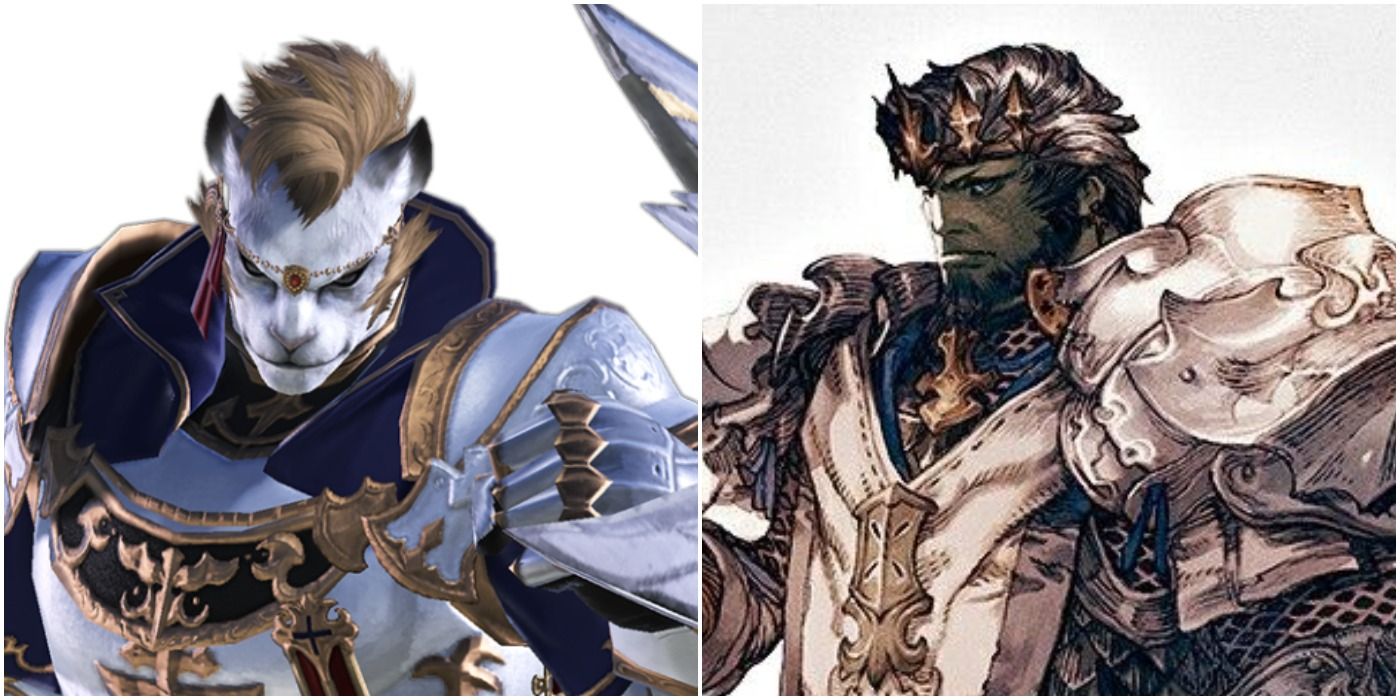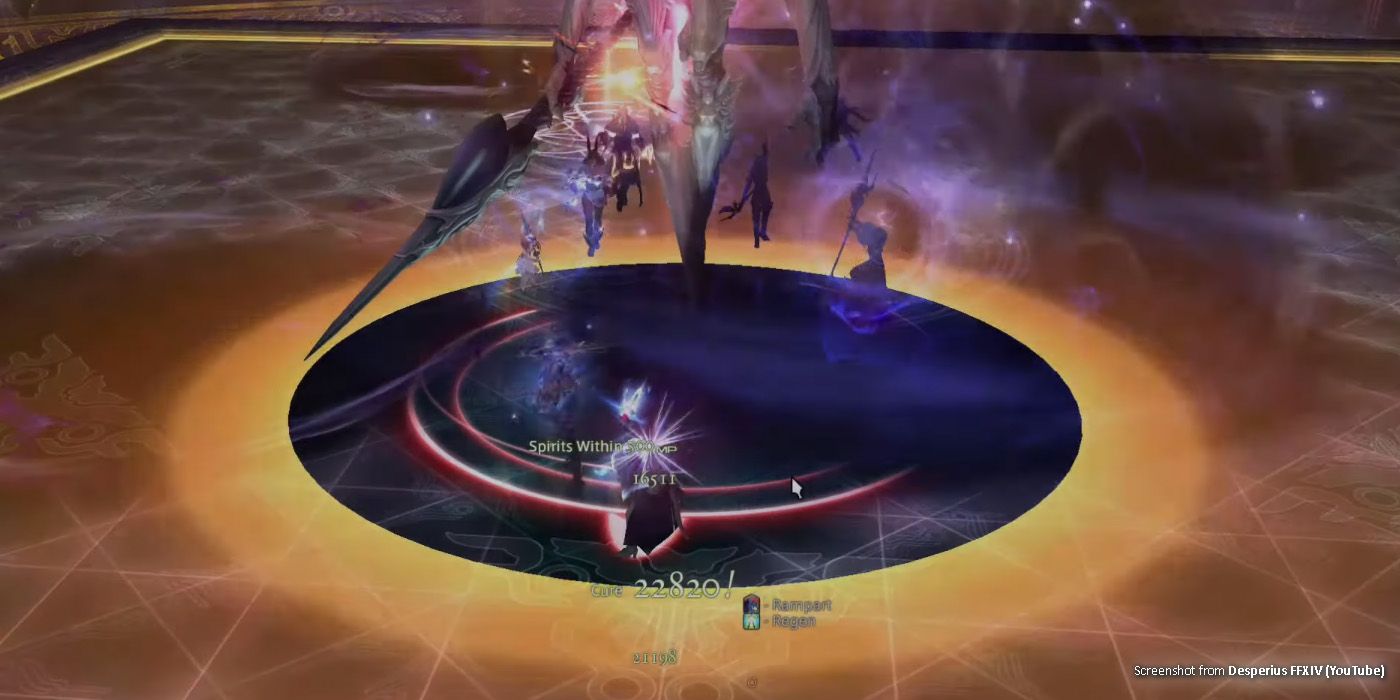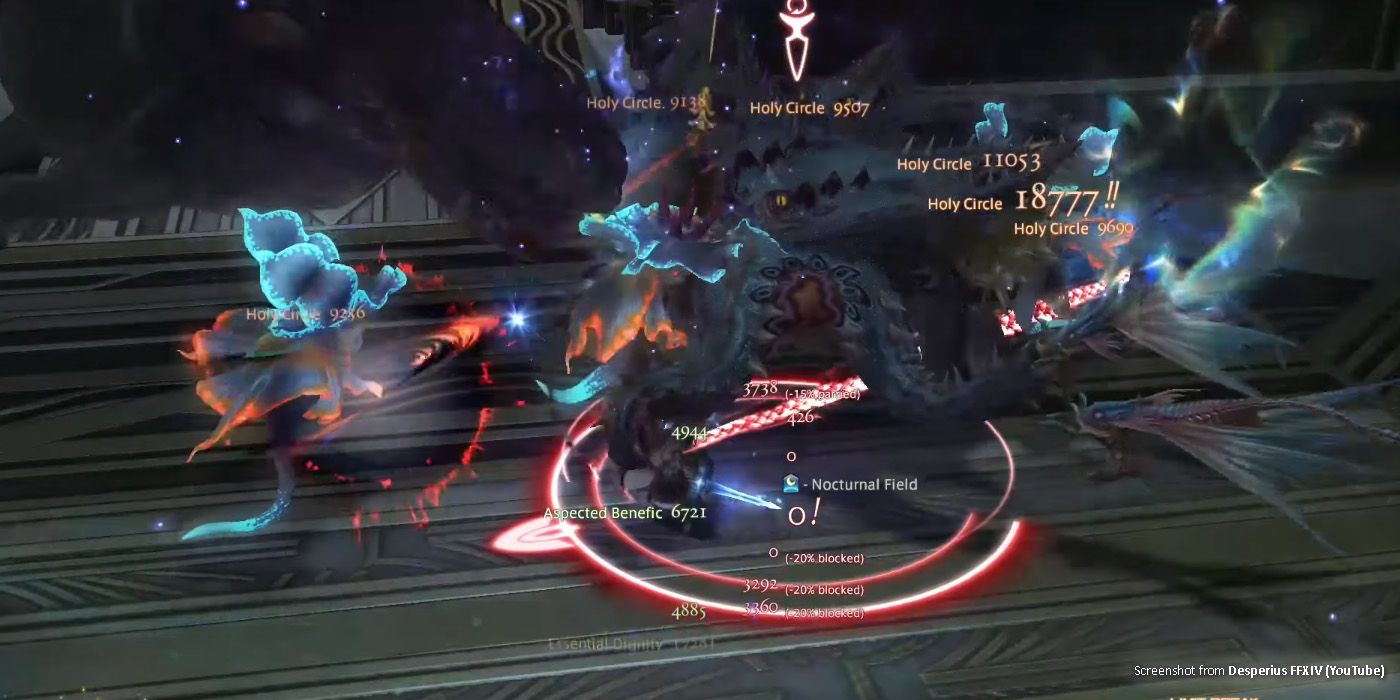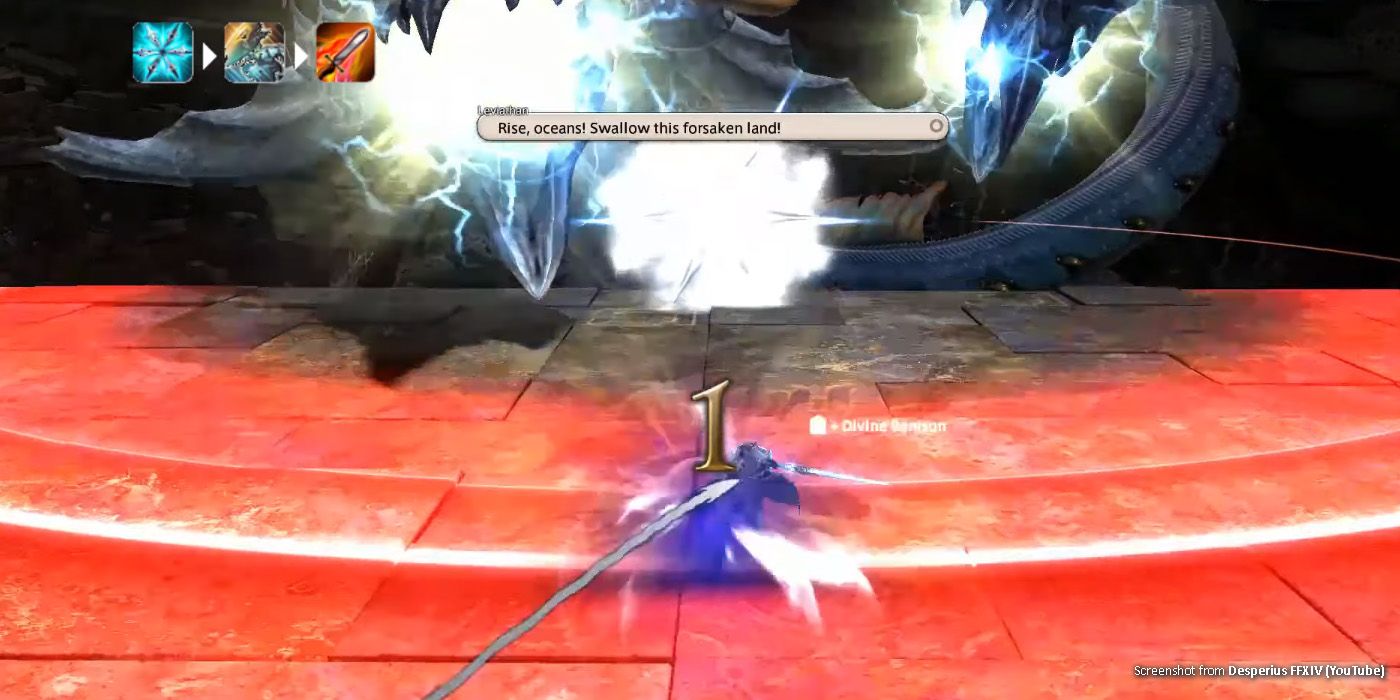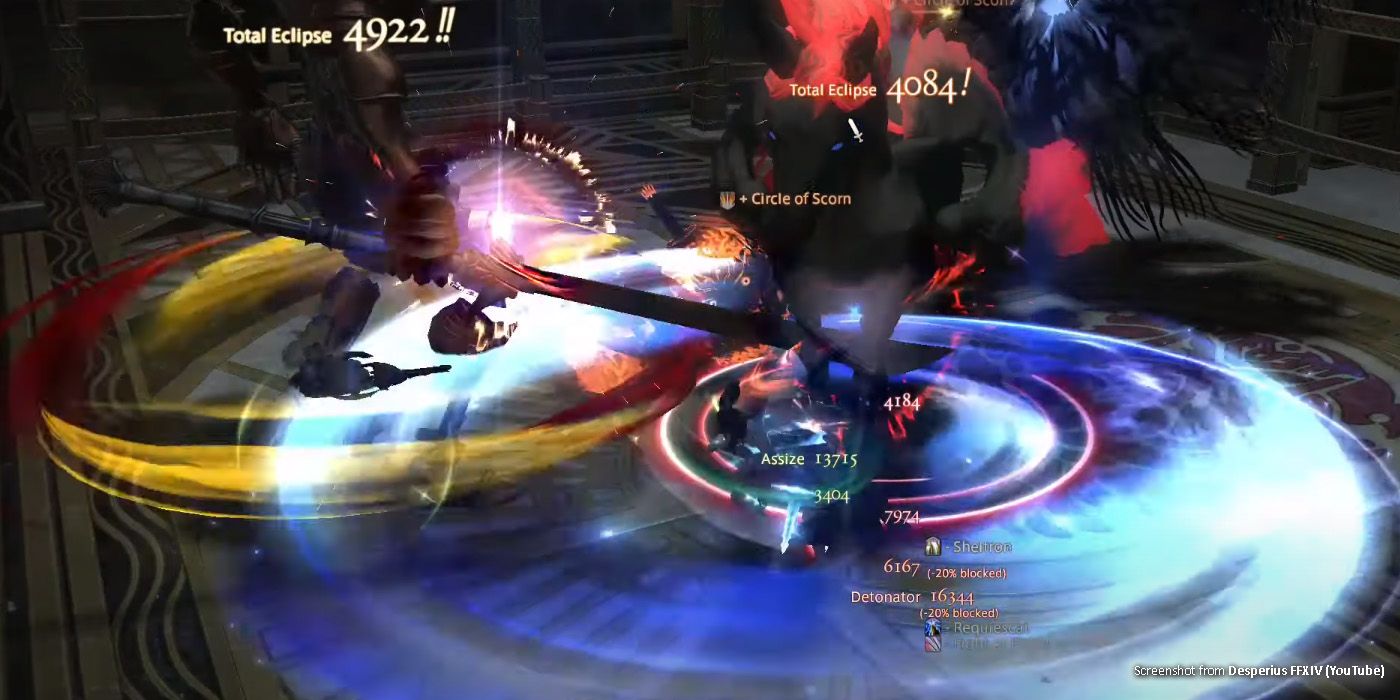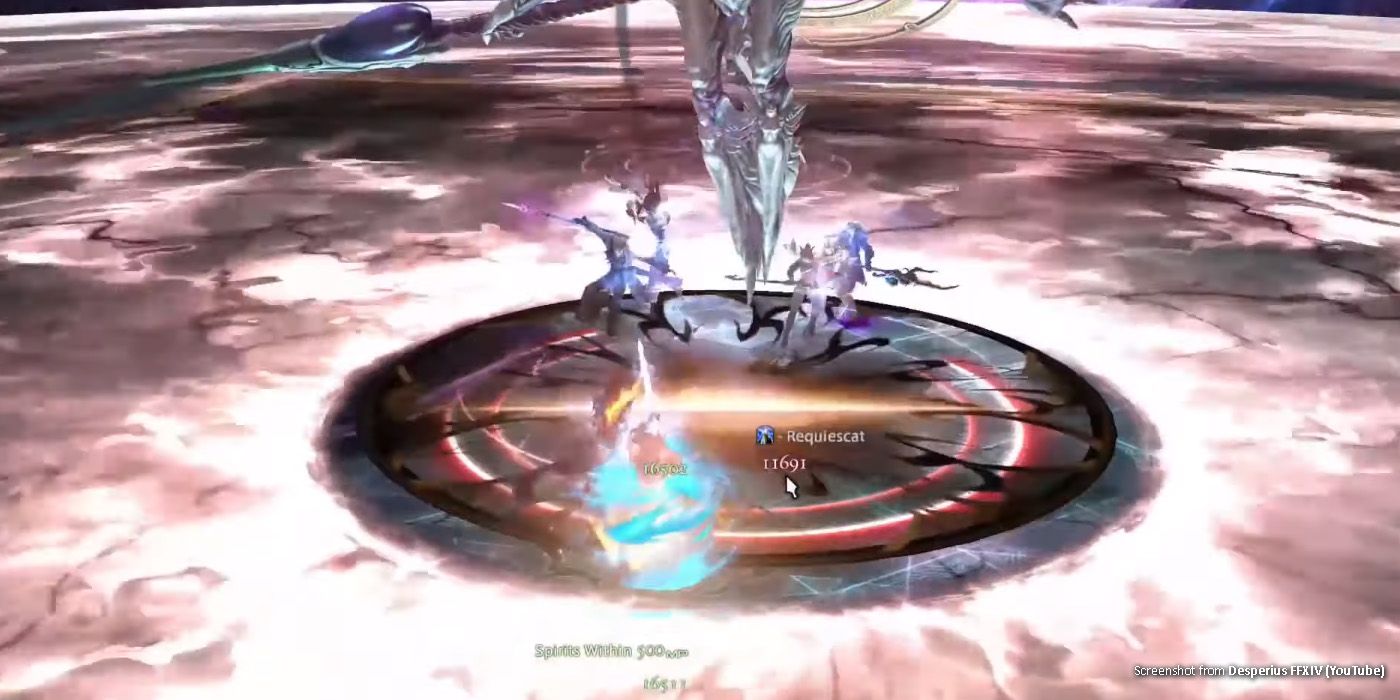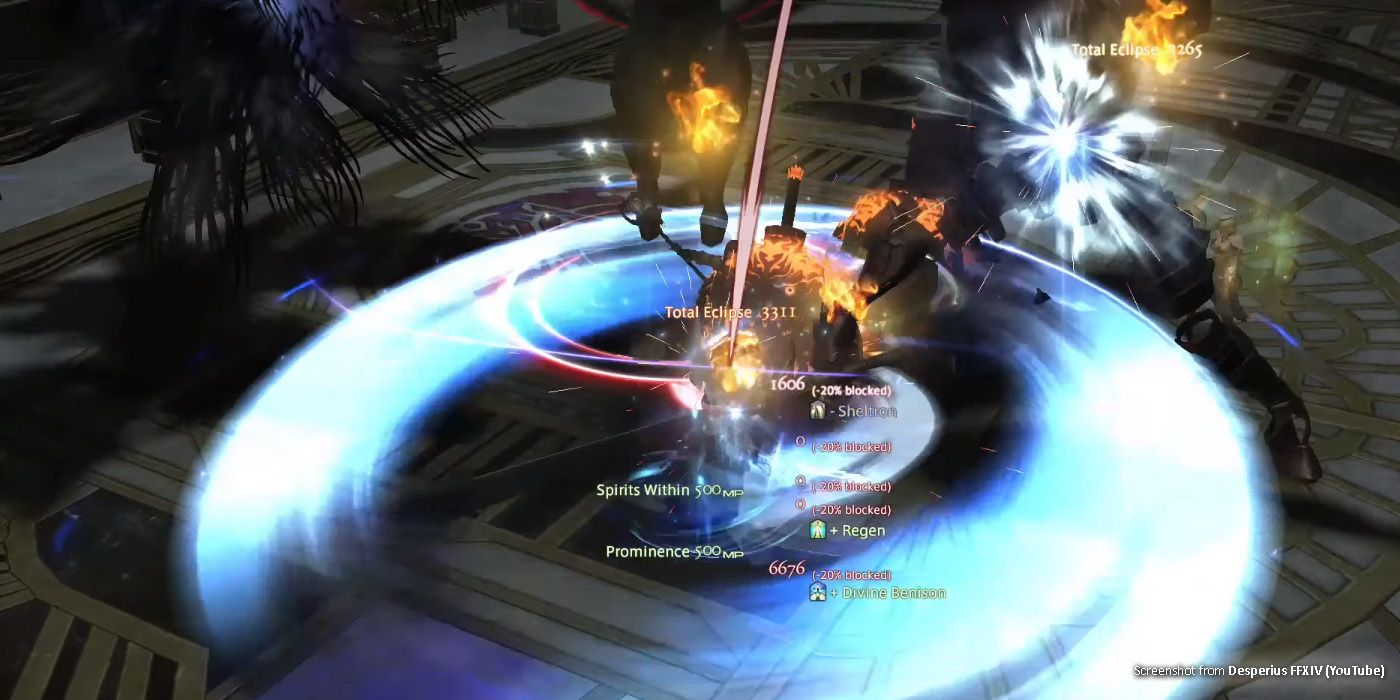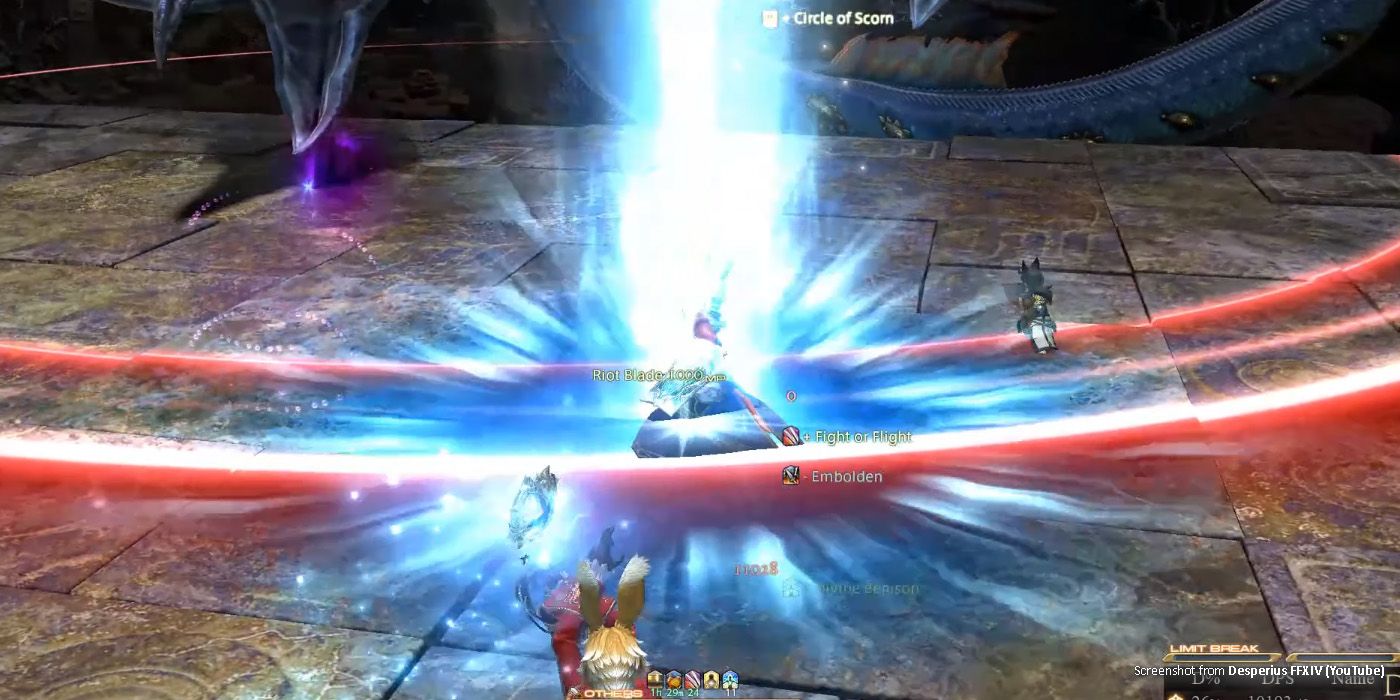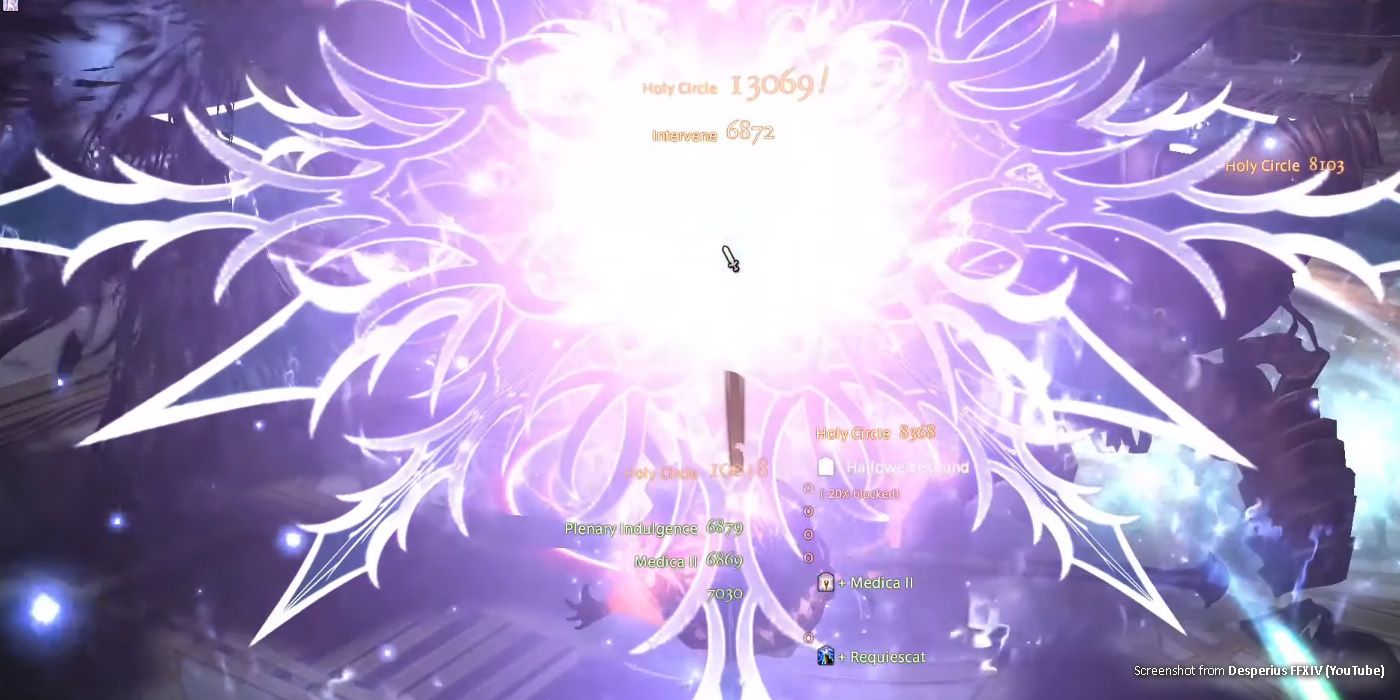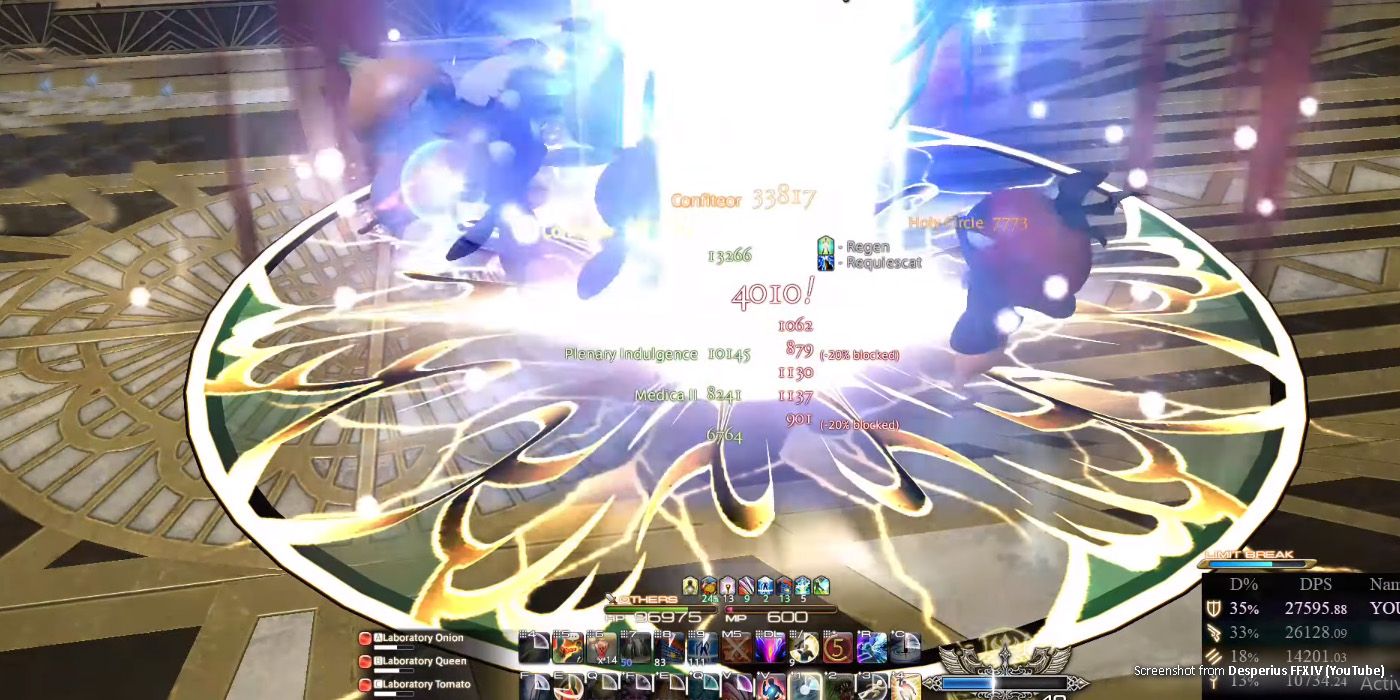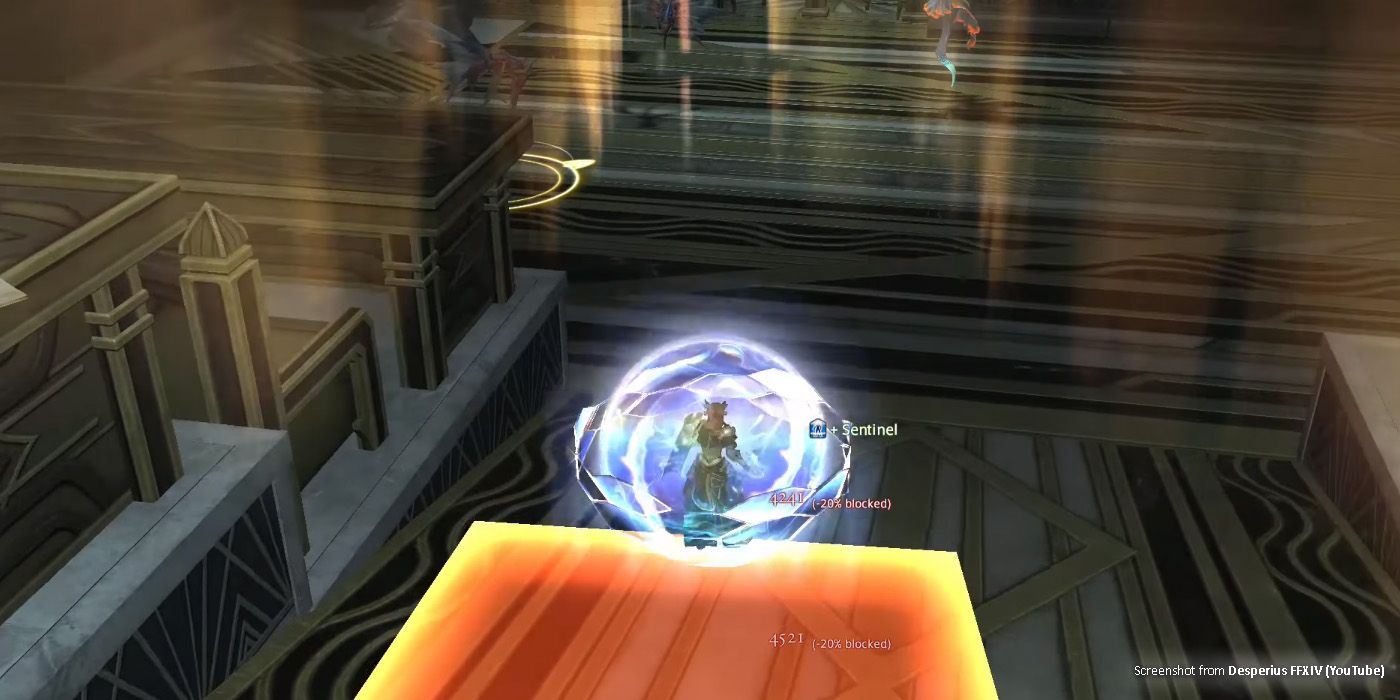Thanks to Final Fantasy 14, fans of the hit Square Enix franchise can take on the role of heroes and defend the world with their friends. Moreover, like other Final Fantasy games, players can protect the realms by taking on Classes that eventually lead to more specialized Jobs. In the case of the Paladin, players transition into this holy warrior from the Gladiator Class.
In FF 14, Paladins specialize in using swords and shields. As such, they offer decent offense, moderate healing, and excellent defensive capabilities. Moreover, players who want a Tank Class that can help the party hold off on their own should consider the Paladin Class. Thankfully, its uncomplicated nature also makes the Paladin one of the easiest Tank Class to learn. Here are some pro tips Paladins should consider:
10 Position Is Key
Most Tanks would just want to face the enemy head-on while the rest of the party adjust. After all, the Tank already has aggro, right? However, the best Tanks actually ensure that all attention centers around them. As such, great Tanks - and therefore great Paladins - should work on efficient repositioning.
For instance, an entire party behind the Paladin serves as an extremely poor tanking position as melee DPS needs to move. Likewise, the Paladin being surrounded by enemies can trap the Tank in crucial situations. Ideally, Paladins should "spin" their targets to their position, effectively flanking them. Paladins should face the enemies and maintain aggro, while the rest of the party attacks the monsters' backs.
9 Spin And Twirl
Spinning remains a key component in any Tank's arsenal. In essence, aside from maintaining aggro, Paladins need to make sure their target won't even think about attacking another member of the party. A lot of this aggro management has to do with keeping enemies moving to the Paladin's preferred position.
For instance, Paladins can open an assault to a target by rushing towards them and keeping aggro as they become their center of attention. Once the Paladin rushes past them and turns to face the enemy, their backs should be turned to the party. In tricky situations, the party and the Paladin should be able to switch positions without attracting unnecessary aggro.
8 Manage Aggro Properly
As Tanks, Paladins need to pay close attention as to how they manage enmity in the party. It's always helpful to have Provoke and Shirk interspersed in combos to keep the Paladin on top of the enemy's aggro priority.
Likewise, Paladins should pay attention to how their party interacts with their targets. DPS who unleash powerful combos can mistakenly "steal" aggro from enemies. In these situations, Paladins should use Provoke and Shirk to steal back their targets and use AOE to force strays to leave the other party members alone.
7 Off-Tank Like A Boss
While FF 14 usually relegates class archetypes into Job Roles such as Tanks, Damage Dealers, and Healers, some roles have popular "specializations." For instance, parties can have two Tanks - one Main Tank, and one Off-Tank. In these situations, the Main Tank handles generating enmity and mitigating damage out of the party. Meanwhile, it's the Off-Tank's duty to carry over if the Main Tank needs to recharge or shuffle their abilities.
Thanks to Iron Will, Paladins can transition from Main Tank to Off-Tank quite easily. Iron Will increases enmity generation when toggled, which means this should be turned off when off-tanking. Paladins should be mindful of using their combos as Off-Tanks, as too much enmity can generate unwanted attention. When transitioning, Paladins should use Shirk and Provoke while moving to the Main Tank's position.
6 Open With Full-Force Against A Boss
Thanks to the Paladin's nature as a Tank, their single-attack combo lets them make quick work of bosses. A Shield Lob and Intervene opener enables them to grab the enemy's attention and zoom in to start the rotation.
Ideally, Paladins who use this combo should start with a damage-over-time combo, utilizing Fast Blade, Riot Blade, Fight-or-Flight, then Goring Blade to induce health reduction effects. This combo should grant them three Atonement charges to use with Royal Blade, followed by a boosted damage-over-time combo.
If the Paladin still has a reasonably large MP pool, they can cast Requiescat, four charges of Holy Spirit, and end with Confiteor.
5 Extinguish Mobs With Sweeps
Thanks to their positioning capabilities, Paladins can quickly accumulate enmity to grab a mob's attention towards them. Moreover, they have a decent AOE combo to make quick work of enemies surrounding the party.
Total Eclipse, Circle of Scorn, and Prominence in quick succession should deal decent AOE on the onset. Paladins should still have decent MP left, which opens them to cast Requiescat, four charges of Holy Circle, and finish with Confiteor. The breathing room here should let them cast Fight-or-Flight and proceed to another AOE rotation.
Ideally, Paladins should cast the Requiescat spell combo once it's available, alongside Circle of Scorn. While Fight-or-Flight becomes extremely useful, it's best used after spell rotations.
4 Consider The Spell Rotations
Despite being a Tank Job, the Paladin possesses a strong spell rotation. Unfortunately, both of the Paladin's single-target and AOE rotations work with a full MP bar alongside Requiescat. As such, Paladins should use these rotations if they have a good grasp of the combat situation.
Requiescat becomes a solid spell combo opener as its damage not only boosts attack magic and healing magic but also casting time. As a plus, Requiescat gets up to Potency 550 with a full MP gauge.
Paladins can opt for a single-target combo by casting four charges of Holy Spirit after Requiescat. Meanwhile, casting four charges of Holy Circle after Requiescat will instead focus on dealing AOE.
Both spell combos also end with Confiteor, which deals Potency 800 damage to a target and its nearby allies. Confiteor only works with Requiescat, so Paladins need to cast Confiteor before Requiescat loses its effect.
3 Be Mindful Of Healers
Tanks love Healers, especially when they get buffed before the battle. However, Healers can become a liability throughout the course of combat if they're not careful. Paladins should always prepare to retake aggro, as some powerful regeneration spells can pull aggro away from the Paladin and into Healers.
Healer classes actually have these aggro-pulling abilities to take note of. Scholars pull aggro with Fey Union and Whispering Dawn. Meanwhile, White Mages steal aggro with Regen and Medica II. Lastly, Astrologians do the same with Aspected Benefic, Aspected Helios, and Wheel of Fortune.
2 Fields Work For The Party
Paladins should also take note of various field-based abilities that can work in their favor. Other Jobs have field-based abilities that can prove detrimental to opponents if they stand there, or beneficial to the Paladin if they maintain their position inside its area of effect.
For instance, the Astrologian's Collective Unconscious and Earthly Star, the Scholar's Sacred Soil, and the White Mage's Asylum can buff the Paladin while attacking opponents. Meanwhile, the Ninja's Doton and the Dark Knight's Salted Earth can debuff enemies within its effective range.
1 Communications And Clemency
The Paladin's Clemency provides a decent heal for the Tank, allowing them to efficiently solo level and even give them emergency heals during battles. Unfortunately, Clemency becomes a point of contention in a lot of parties, as others think a Paladin could do better by trading Clemency for a pull. However, players who are Paladins should communicate with their party about their strategy in matters of healing.
Ideally, Paladins should use Clemency whenever there's a window and a party member is in need of healing. Aside from the heals the Paladin gets, Clemency can heal party members - which can help Healers busy healing others or help DPS who are busy attacking the boss. Likewise, Healers should clearly define their rotations, so the Paladin's Clemency won't overlap with the Healer's rotational heals.

